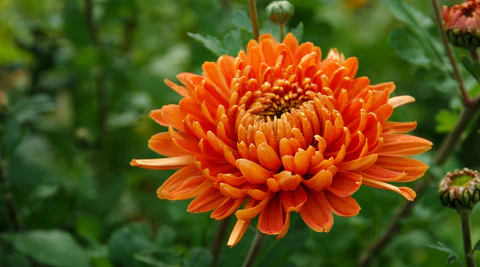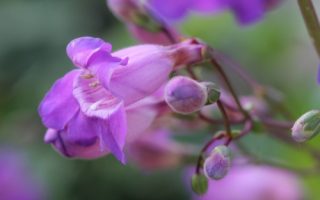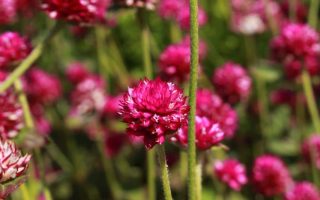kimzolciakwedding.com – The Chrysanthemum, commonly known as the mum, is a flowering plant that has captivated gardeners, florists, and enthusiasts for centuries. Known for its stunning array of colors, intricate petal formations, and symbolic meanings, the Chrysanthemum is one of the most beloved flowers worldwide. With its rich cultural significance, long blooming season, and versatility in various gardening settings, this flower has earned a prominent place in gardens and homes alike.
Origins and History
The Chrysanthemum (Chrysanthemum spp.) is native to East Asia and northeastern Europe. Its cultivation dates back over 2,000 years, with the flower originating in China, where it was first used for medicinal purposes. In fact, the Chrysanthemum was one of the “Four Noble Plants” in Chinese culture, alongside the plum, orchid, and bamboo. The flower’s medicinal uses were believed to treat a variety of ailments, and it was even thought to have longevity-promoting properties.
Chrysanthemums were introduced to Japan in the 8th century, where they were revered and eventually became a symbol of the emperor. In the 17th century, they were brought to Europe, where they quickly gained popularity for their beauty and versatility as ornamental flowers. Today, Chrysanthemums are widely cultivated around the world, and their symbolic meanings vary depending on cultural context.
Physical Characteristics
Chrysanthemums come in a wide range of sizes, shapes, and colors, making them one of the most diverse and versatile flowers in the plant kingdom. The blooms can be found in hues of yellow, red, white, pink, purple, and orange, often with multi-colored or bi-colored petals. Some Chrysanthemums feature unique petal formations, such as the pompom, spider, or daisy-like shapes, while others may have densely packed, frilled petals that create a more dramatic look.
The plant itself typically grows between 1 and 3 feet in height, though some varieties can reach up to 4 feet or more, depending on the growing conditions and specific cultivar. The foliage of the Chrysanthemum is deep green, with jagged or lobed edges that complement the flower’s bold blooms. The plants often have a bushy appearance and may require staking or support, especially in the case of taller varieties.
Chrysanthemums are typically grown as perennials in warm climates but are often treated as annuals in cooler areas due to their sensitivity to frost. They can be grown in containers, flower beds, or as part of larger garden displays.
Symbolism and Meaning
The Chrysanthemum holds deep symbolic meaning in various cultures around the world. In many parts of Asia, particularly Japan and China, the flower is associated with longevity, vitality, and good fortune. It is often considered a symbol of the sun, as it blooms in the fall when the sun’s warmth begins to wane. In Japan, the Chrysanthemum is also a symbol of the emperor, as the imperial family has used the flower in their crest for centuries.
In Western cultures, the Chrysanthemum is typically associated with friendship, love, and joy. It is often used as a gift to celebrate happy occasions such as birthdays, anniversaries, and other celebrations. In some European countries, the flower is a symbol of the harvest season, as it typically blooms in the fall.
However, in some cultures, the Chrysanthemum can have more somber meanings. In some parts of Europe, it is used in funerals and is seen as a symbol of death and mourning. In these instances, the flower represents a tribute to loved ones who have passed away.
Growing and Caring for Chrysanthemums
Chrysanthemums are relatively easy to grow and maintain, though they do require some attention to ensure they reach their full potential. Here are some essential tips for growing and caring for Chrysanthemums:
- Light Requirements: Chrysanthemums prefer full sun and thrive when they receive at least six hours of direct sunlight each day. This is especially important during the blooming season, as plenty of sunlight encourages the flower to produce vibrant, long-lasting blooms.
- Soil and Watering: Chrysanthemums prefer well-drained, slightly acidic to neutral soil. It is important to keep the soil moist but not waterlogged, as excess moisture can lead to root rot. Regular watering is essential during the growing season, especially during dry periods. However, it is important to avoid watering the foliage directly to prevent fungal infections. Mulching around the base of the plant can help retain moisture and regulate soil temperature.
- Temperature and Humidity: Chrysanthemums thrive in moderate to warm temperatures, typically between 60 to 70°F (15 to 21°C). They can tolerate cooler temperatures but are sensitive to frost. In colder regions, Chrysanthemums should be treated as annuals or brought indoors during the winter months. Adequate air circulation is important to prevent humidity-related diseases, such as powdery mildew.
- Fertilizing and Pruning: Chrysanthemums are heavy feeders and benefit from regular fertilization. A balanced, water-soluble fertilizer should be applied every 4 to 6 weeks during the growing season to encourage robust growth and vibrant flowers. To keep the plant bushy and encourage more blooms, pinch back the tips of the stems early in the growing season. Deadheading spent blooms will also help extend the flowering period and promote fresh blossoms.
- Pests and Diseases: Chrysanthemums are relatively pest-resistant, but they can occasionally be affected by aphids, spider mites, or whiteflies. If pests are observed, organic insecticidal soap or neem oil can be used as a natural remedy. Chrysanthemums can also be prone to fungal diseases such as rust or powdery mildew, especially in humid conditions. To prevent this, avoid overhead watering, ensure good air circulation, and treat with fungicides if necessary.
Uses and Applications
Chrysanthemums are incredibly versatile, both as ornamental plants and in practical applications. In the garden, they are often used as border plants, in flower beds, or as focal points in seasonal displays. Their bright colors and long blooming season make them an excellent choice for fall gardens, where they provide a burst of color as other flowers begin to fade.
In addition to their ornamental value, Chrysanthemums are often used in floral arrangements and bouquets. Their vibrant colors and long-lasting blooms make them a popular choice for fall-themed arrangements, weddings, and special events. They are also widely used in cut flower markets due to their wide variety of colors and shapes.
The plant has medicinal uses as well, particularly in traditional Asian medicine. Chrysanthemum tea, made from dried Chrysanthemum flowers, is believed to have health benefits, including soothing the throat, improving circulation, and supporting the immune system. However, it is important to consult a healthcare provider before using Chrysanthemums for medicinal purposes.
Chrysanthemums are also used in some cultures as natural insect repellents. The flowers contain compounds that are toxic to certain pests, and the plants are sometimes planted near vegetable gardens or orchards to deter insects.
Conclusion
The Chrysanthemum is a flower that embodies beauty, resilience, and versatility. With its rich history, symbolic meanings, and wide range of colors, it continues to be a favorite among gardeners and flower enthusiasts alike. Whether used to brighten up a fall garden, enhance a floral arrangement, or symbolize love and friendship, the Chrysanthemum remains a beloved flower that stands the test of time. Its ability to adapt to various growing conditions, coupled with its stunning visual appeal, makes it an ideal addition to any landscape or home.



